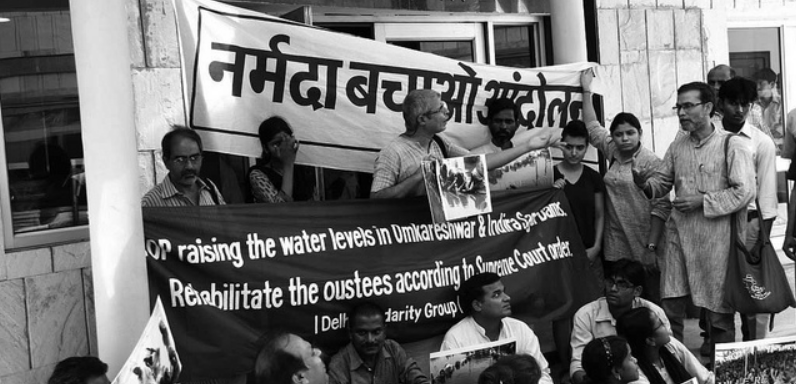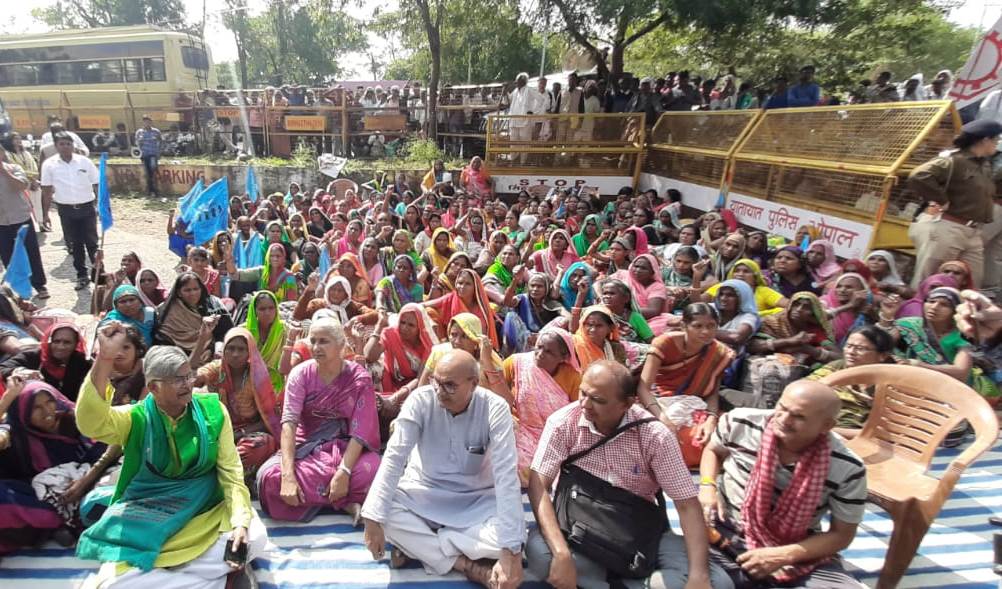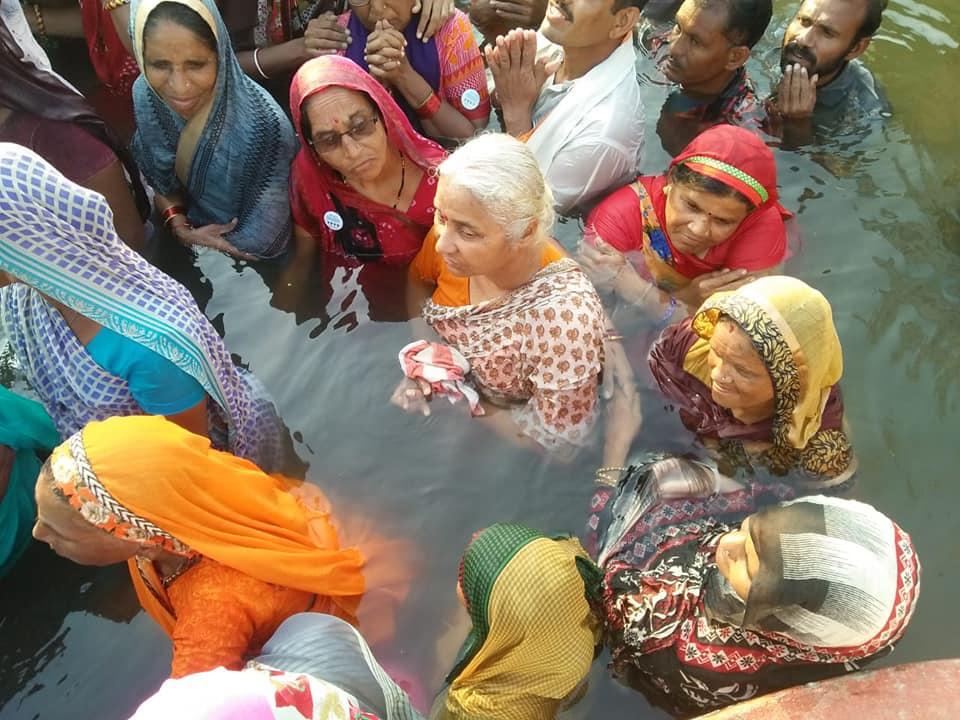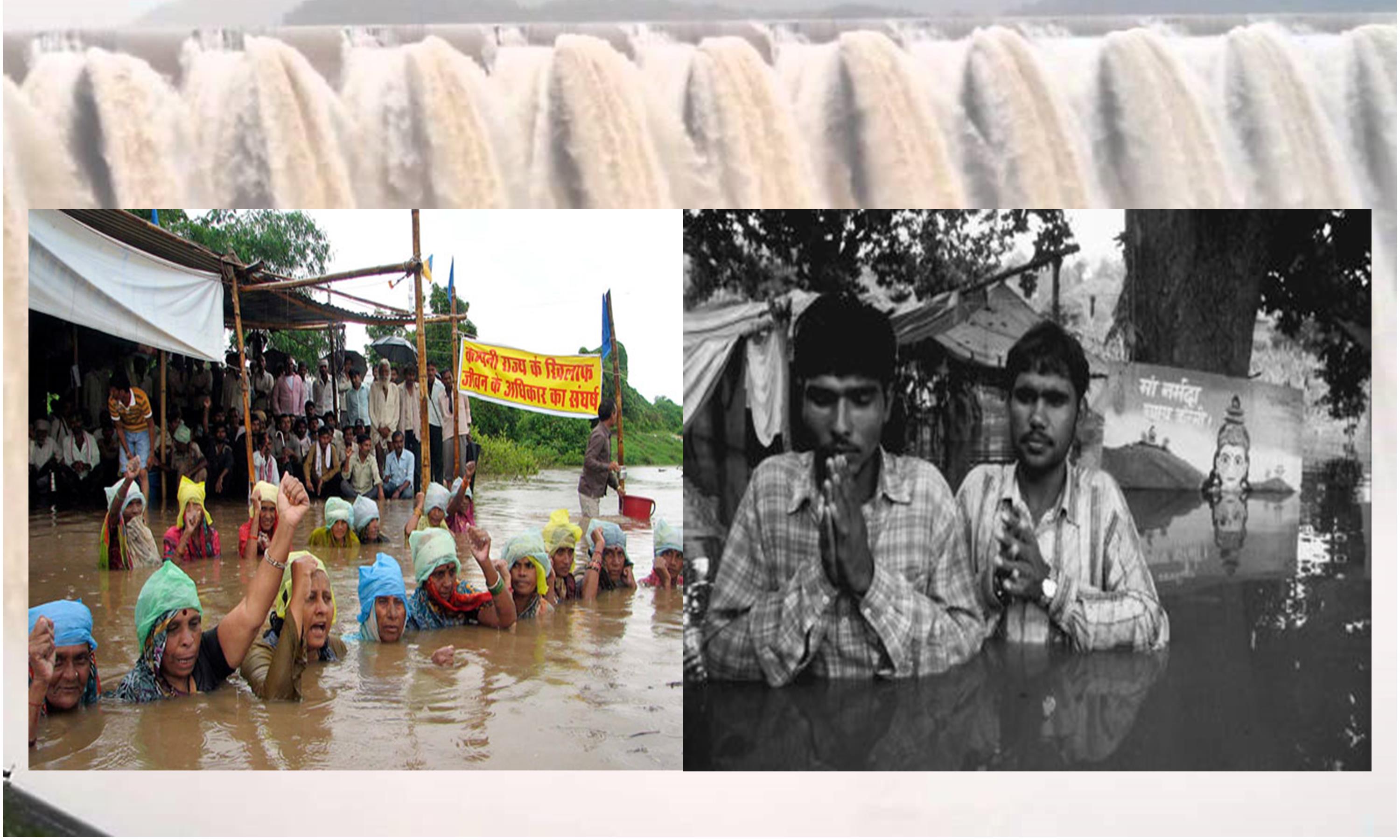The Sardar Sarovar Dam was recently inaugurated by the Prime Minister despite the history of prolonged people’s movement against its construction. What does an event of this kind symbolise for the future of the country and the fate of its ordinary citizens?
Ananya Pathak | The New Leam

The Sardar Sarovar is known to be gravity dam and is located on the Narmada River near Navagam in Gujarat. Four states of the county namely Gujarat, Madhya Pradesh, Maharashtra and Rajasthan receive water and electricity through it. The foundation stone for the project was laid down in 1961 by the then Prime Minister Jawaharlal Nehru. Out of the 3o dams on the Narmada River, Sardar Sarovar Dam is the largest. The dam is one among India’s most controversial projects and has received much critique too in regard to its environmental implications and the loss of human habitation and welfare. The World Bank was initially the one funding the project but it withdrew itself in 1994. The movement against the dam has been going on since the 1980s. The efforts of the NBA( Narmada Bachao Aandolan)have been towards fighting for environmental justice for those who were likely to be most directly affected by the construction of the dam. The primary leader of the NBA has been Medha Patkar. In support of the movement, the famous writer-thinker Arundhati Roy wrote-
Big Dams are to a Nation’s “Development” what Nuclear Bombs are to its Military Arsenal. They are both weapons of mass destruction. They’re both weapons Governments use to control their own people. Both Twentieth Century emblems that mark a point in time when human intelligence has outstripped its own instinct for survival. They’re both malignant indications of civilisation turning upon itself. They represent the severing of the link, not just the link—the understanding—between human beings and the planet they live on. They scramble the intelligence that connects eggs to hens, milk to cows, food to forests, water to rivers, air to life and the earth to human existence.

The Sardar Sarovar dam was inaugurated by the Prime Minister on 17th September. Once again the debate has begun about its cost benefits and whether this will actually do more harm than good to the environment and the people most directly affected by its construction. This comes especially at a time when the long running movement against the construction of the dam, the appeal and protest of the thousands of ordinary men and women being affected by it is being so conveniently neglected. It is alleged that the people displaced by the dam have so far not been rehabilitated or compensated. It was because of massive protests that even though the construction of the dam had started as early as 1961 it is only now that it got inaugurated. Under the leadership of the movement’s stalwart Medha Patkar the people of the Narmada valley also launched a ‘Jal Satyagrahaa’ wherein people resolved to drown in the Narmada rather than making way for the construction of the dam.

In order to be able to examine and assess whether the Sardar Sarovar Project (SSP) is really a curse on the people or a true blessing for them what we need to do is that we have to engage in a careful and credible assessment of all the implications of the project, the costs, benefits and impacts once the project is completed. What we must understand is that even though we hear news of the Prime Minister inaugurating the dam the fact remains that the construction of the dam is not yet complete. Firstly, the project is still incomplete and under construction despite the fact that a massive downscaling of the size of the canal network was undertaken leading to about a shrinkage of nearly 18,000 km. If one were to look at the Gujarat government figures, with over 30,000 km of canals yet to be completed; the Garudeshwar Dam downstream from the SSP is still under construction. Moreover what is more surprising is the fact that this is so far without any social and environmental impact assessment. Added to this is the fact that there is also no proper assessment of the benefits that the project will bring about or the exact cost of losses it will incur.

Despite the severe protests against the dam; a justification was offered for the construction of SSP by the Gujarat government from the time of the Narmada Water Disputes Tribunal in the 1970s was the fact that there is no alternative to SSP. They suggested that many areas of Gujarat such as Kutch, Saurashtra and northern parts of Gujarat were in stark need of water and irrigation facility and doing without the dam had become impossible. Upon careful observation and keen study what one would observe is a strange irony- all the incomplete parts of the canal network of the project are in this very region and in the regions where there is not much of a water crisis the canal network work had been completed long ago. So this then goes on to show that the SSP’s basic aims are far from being actualised.

The troubles associated with the dam do not end just here in fact the impact on the environment which was initially assessed and estimated has today gone far beyond any reach. Rehabilitation of people from the submerged areas is nearly 80% incomplete. The other alarming damages of the dam are as follows-
- Nearly a 150-km stretch of the Narmada downstream from the dam is now completely left dry most of the year and the claim of 600 cubic feet per second being released not immediately downstream but several kilometres from the dam is not supported by any clinching evidence.
- The livelihoods of at least 10,000 families depending on the Narmada estuary have been complexly destroyed. No adequate arrangements have been made for rehabilitation or compensation.
- Further the Sardar Sarovar reservoir could not be filled, and even the extent to which it was filled (up to a maximum of 129.68 m against the full reservoir level of 138.68 m) was possible only by putting a sudden halt to all the power generation at the River Bed Power House for almost two and through reducing power generation at the upstream Indira Sagar and Omkareshwar dams by over 95% and thereby leading to the depletion of the meagre water storage of the dam.

What one must understand is that development at the cost of the lives and livelihoods of the masses that are deprived of all basic rights such as rehabilitation and compensation and are further pushed into the margins by the aggressive discourse of masculinist development must certainly be problematized. The project in its present form no matter how attractively projected is also destined to create unprecedented destruction and human misery. We must ask ourselves whether we really are ready to pay heed to the voices of the thousands who have lost and will continue to lose everything if we do not adopt a more sustainable approach to the question of development.
The New Leam has no external source of funding. For retaining its uniqueness, its high quality, its distinctive philosophy we wish to reduce the degree of dependence on corporate funding. We believe that if individuals like you come forward and SUPPORT THIS ENDEAVOR can make the magazine self-reliant in a very innovative way.













